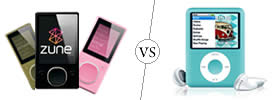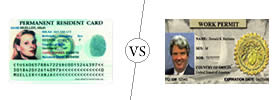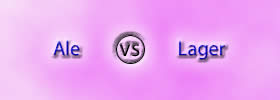Difference between Sugar and Powdered Sugar
Key difference: Sugar is the generalized name for sweet-flavored food substances. Sucrose, table sugar, is mainly extracted from either sugarcane or sugar beet. Sugar became a popular sweetener in the 18th century. The most commonly used sugar is the granulated sugar. This is the sugar that we use on a daily basis, as well as in most recipes. Powdered sugar is a super fine sugar, finer than even castor sugar. It is often termed as 10X sugar, confectioner's sugar or icing sugar. In France, it is called Sucre Glace.
 Sugar is the generalized name for sweet-flavored food substances. Sugars are categorized as carbohydrates, which are a group of compounds made up of carbon, hydrogen and oxygen. Carbohydrates, and in turn sugars, are the source of chemical energy for living organisms, including humans. Sugars are categorized as monosaccharide, disaccharides and polysaccharides. Monosaccharides are the simplest carbohydrate type, composed of a single molecule. These include glucose, galactose, and fructose. Disaccharides are made up of two molecules. The table sugar, also known as sucrose, most commonly used by humans, is a type of disaccharide. Other disaccharides include maltose and lactose.
Sugar is the generalized name for sweet-flavored food substances. Sugars are categorized as carbohydrates, which are a group of compounds made up of carbon, hydrogen and oxygen. Carbohydrates, and in turn sugars, are the source of chemical energy for living organisms, including humans. Sugars are categorized as monosaccharide, disaccharides and polysaccharides. Monosaccharides are the simplest carbohydrate type, composed of a single molecule. These include glucose, galactose, and fructose. Disaccharides are made up of two molecules. The table sugar, also known as sucrose, most commonly used by humans, is a type of disaccharide. Other disaccharides include maltose and lactose.
Sucrose, table sugar, is mainly extracted from either sugarcane or sugar beet. Sugar became a popular sweetener in the 18th century, after sugar plantations were set up in the West Indies and Americas. However, sugar was being produced as far back as the ancient times in India, and subsequently in China. After the 18th century, sugar was very popular, but rare, and it could only be afforded by the wealthy. Hence, sugar was often called “white gold.”
Sugar is processed through a long process. First the juice is extracted, and then purified with lime and heat. Then it is further processed, and it eventually separates into sugar crystals and molasses. The sugar crystals are bleached and refined to give the end product, which we buy at the supermarket. This is the traditional white sugar.
Sugar, is available in many forms in the market. Some of the forms of sugar available are granulated white sugar or table sugar, superfine (castor or caster) sugar, coarse (decorators or pearl) sugar, crystal sugar, confectioners, powdered or icing sugar, invert sugar, brown sugar, raw sugar, Demerara sugar, Muscovada or Barbados sugar, Turbinado sugar, etc.
Each one has its specific uses especially for cooking and baking. The type of sugar used is extremely important, especially in baking. This is true, as the size of the sugar crystal affects the amount of air that can be incorporated into the baking batter, especially during the creaming of the sugar and fat or butter. The size of the crystal will also affect how quickly the sugar will dissolve in the batter. All these factor effect the look, consistency and taste of the finished baking product.
The sugar we used on a daily basis is often called as table sugar. However, it has another name as well, granulated sugar. This sugar is the most commonly used sugar and is used in most of the recipes. Regular sugar is well recognized due to its paper-white color and fine crystals. They are able to dissolve better when added to recipes or heated. When heated, sugar tends to take on a toffee-like color and flavor, which is why it is also often used in the production of caramel.
 Table sugar has medium-sized granules, about 0.5 mm across. The medium size of the granules allows the sugar to incorporate more air into the batter, as oppose to most other types of sugar. However, the size of the sugar crystals may vary from difference manufactures. Some may be too fine, while some may be too large. Mixing granulated sugar with sugar syrup and molding them in lumps leads to the production of sugar cubes.
Table sugar has medium-sized granules, about 0.5 mm across. The medium size of the granules allows the sugar to incorporate more air into the batter, as oppose to most other types of sugar. However, the size of the sugar crystals may vary from difference manufactures. Some may be too fine, while some may be too large. Mixing granulated sugar with sugar syrup and molding them in lumps leads to the production of sugar cubes.
Powdered sugar is a super fine sugar, finer than even castor sugar. It is often termed as 10X sugar, confectioner's sugar or icing sugar. In France, it is called Sucre Glace. The size of the sugar crystal varies 10X sugar is usually 0.010 mm, while confectioner's sugar is 0.060 mm, and icing sugar is 0.024 mm. The term 10X refers to sugar that has been processed ten times. In addition to sugar, most commercially sold powdered sugar has an anti-caking agent to prevent clumping of the sugar. This is usually 1% to 3% either cornstarch or tri-calcium phosphate.
To get the fine granulation of the powdered sugar, the sugar is ground in a steel magnesium rotary which turns against varying degrees of fine screens. Each of these screens determines a different fineness of the grind. The coarser granulation of the initial sugar, the more even will be the final grind.
Powdered sugar is often used to make icings, frostings, confections, sweet pastry, meringues, whipping cream or for dusting a final touch on cakes, waffles or pastries. This is mainly due to the fact the anti-caking agent in the sugar prevent it from crystallizing.
One can also make an adequate substitute for powdered sugar at home, by running regular sugar in a food processor until it has turned into a fine powder. In order to make it exactly like the store brought product, i.e. with the anti-caking properties, add 1 teaspoon of cornstarch to 1 cup of powdered sugar.
Image Courtesy: thehindubusinessline.com, fanpop.com









Add new comment